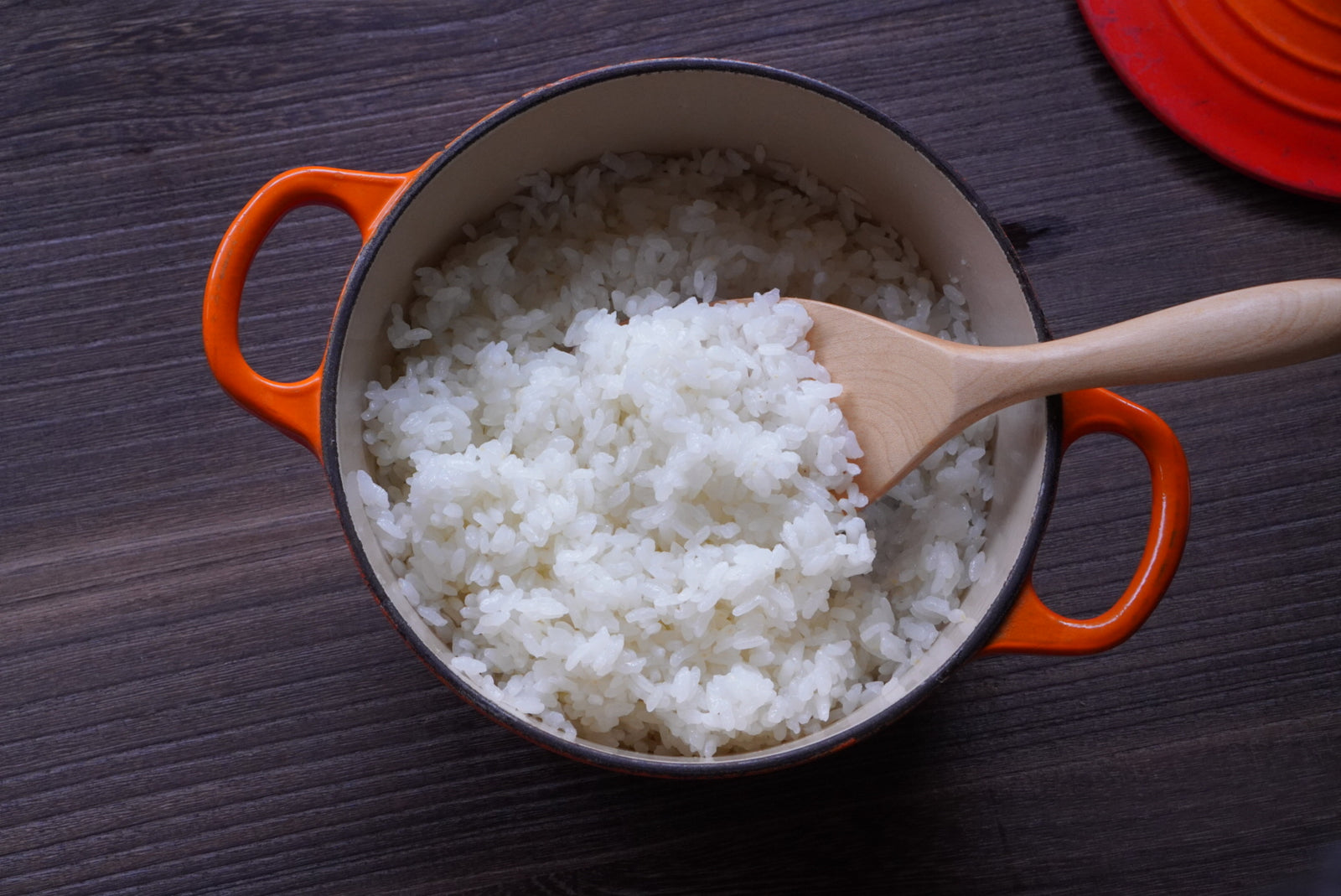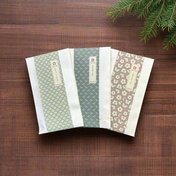This is an article about how to cook Japanese rice. This sounds simple, but I will show you how to get the best results. This is straight forward even if you don't have a rice cooker. You can cook rice easily in a pan. Cooked rice called gohan is the most common type of rice eaten at almost every meal in Japan. Once you learn how to make it, you can make sushi at home, too. You can also enjoy many Japanese meals with it. So, I would say, cooking rice is the first step in learning about Japanese cuisine.
What is Japanese rice?

In this article, "Japanese rice" means a type of rice called uruchi rice which is usually eaten for meals in Japan. It is short-grain cultivars of Japonica rice, and when it's cooked, it has a sticky and soft texture, compared to Indica (Oryza sativa) rice. It's labelled as "Japanese style short grain rice" or "sushi rice" ,as this is one of the common usage. Koshirikari is a famous Japanese rice cultivar, and it is also grown in the USA or Europe.
Tips for Cooking
1 Equipment and Ingredient

You only need a pan with a lid and a cup. You can use any pans or pots with a lid in your shelf, but choosing a deep pan/pot is easier to make. Get a cup in your shelf for measuring. The ratio of rice and water is 1:1 for this recipe, so it's very easy to measure. Ingredients are just rice and water, no salt is added for this recipe. Rice doesn't absorb enough water if you add salt, and, as the result, it will have a tough texture.
2 How Much Rice You Need

1 cup (200ml) of rice makes 2.5 rice bowls of rice (about 350g/12oz) .
You can cook as much as you want. If you cook too much rice, you can store the rice in the freezer for about a month. Wrap rice for each meal with a cling film, and defrost it when you have.
3 Don't Skip Soaking
Soaking rice in water before heating is very important for this type of rice. It will take 30 minutes to 1 hour until the rice becomes white from translucent. If the rice is not soaked enough, heat and water don't reach to the core of the rice during cooking, and the texture is not so good, and the rice looses some sweetness.
How To Cook Japanese Rice

Ingredients
[ for 5 rice bowls ]
- rice 2 cups (400ml)
- water 2 cups (400ml)
Instructions
-
Rinse the rice:
Rinse the rice 2-3 times with lots of water using your hands until the water is translucent. Drain the water. -
Soak the rice in water:
Add the rice in a pan, and soak the rice in the same ratio of water for more than 30 minutes to absorb it. When the rice turns into white from translucent, it's ready to heat. -
Bring the water to a boil:
Put the pan on low-medium heat without the lid, and bring to a boil. -
Maintain a simmer:
When the water boils with big bubbles in the pan, reduce the heat to low, and put the lid on. Maintain a gentle simmer for 10-12 minutes. - Let the rice rest:
Turn off the heat and let the rice sit for 15 minutes with the lid on. During this time, the rice will steam for extra fluffy results.
- Fluff the rice with a spatula.
You can enjoy a bowl of rice with Yukari, sundried salt-pickled perilla leaves and sesame on top!

"What is Yukari" from here What is Red Shiso (Perilla) and How to Enjoy it
It's simple to make it. Let's start making Japanese rice at home!
Today's Recommendations
Iijima Seitarou Shoten KN004: Yukari - Sundried, salt-pickled shiso leaves ゆかり

You can enjoy it like a herbal salt, sprinkling on salad, cheese and sandwiches.
Yamani - Teshigoto Series: Mt Fuji Rice Bowl, 13 cm, Indigo

If you eat cooked rice with this rice bowl, using chopsticks, it is a typical style of a Japanese meal!
Articles

Shio-koji (Japanese fermented condiment) Recipe
Homemade Hojicha Roasting Experiment


